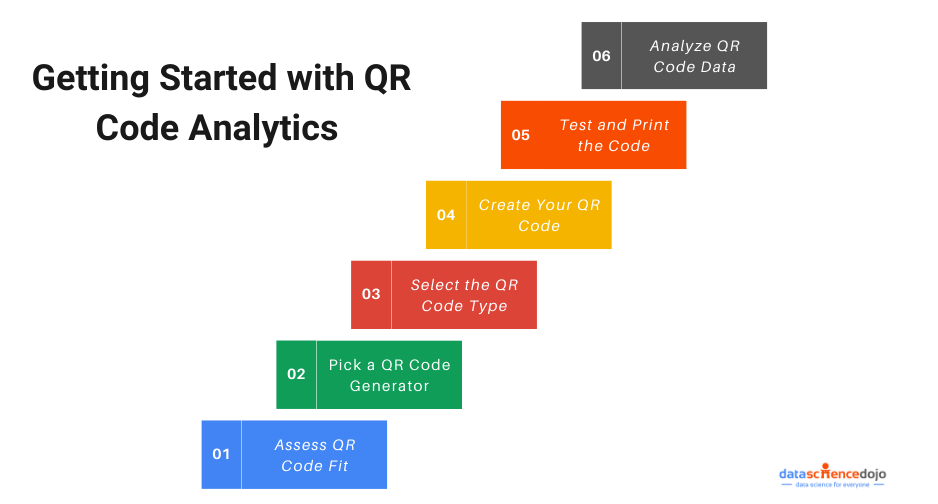The COVID-19 pandemic threw businesses into uncharted waters. Suddenly, digital transformation was more important than ever, and companies had to pivot quickly or risk extinction. And the humble QR code – once dismissed as a relic of the past – became an unlikely hero in this story.
QR tech’s versatility and convenience allowed businesses, both large and small, to stay afloat amid challenging circumstances and even inspired some impressive growth along the way. But the real magic happened when data analytics was added to the mix.
You see, when QR code was paired with data analytics, companies could see the impact of their actions in real time. They were able to track customer engagement, spot trends, and get precious new insights into their customers’ preferences. This newfound knowledge enabled companies to create superior strategies, refine their campaigns, and more accurately target their audience.
The result? Faster growth that’s both measurable and sustainable. Read on to find out how you, too, can use data analytics and QR codes to supercharge your business growth.
Why Use QR Codes to Track Data?
Did you ever put in a lot of effort and time to craft the perfect marketing campaign only to be left wondering how effective it was? How many people viewed it, how many responded, and what was the return on investment?
Before, tracking offline campaigns’ MROI (Marketing Return on Investment) was an inconvenient and time-consuming process. Businesses used to rely on coupon codes and traditional media or surveys to measure campaign success.
For example, say you put up a billboard ad. Now without any coupon codes or asking people how they found out about you, it was almost impossible to know if someone had even seen the ad, let alone acted on it. But the game changed when data tracking enabled QR codes came in.
Adding these nifty pieces of technology to your offline campaigns allows you to collect valuable data and track customer behavior. All the customers have to do is scan your code, which will take them to a webpage or a landing page of your choosing. In the process, you’ll capture not only first-party data from your audience but also valuable insights into the success of your campaigns.
For instance, if you have installed the same billboard campaign in two different locations, a QR code analytics dashboard can help you compare the results to determine which one is more effective. Say 2000 people scanned the code in location A, while only 500 scanned it in location B. That’s valuable intel you can use to adjust your strategy and ensure all your offline campaigns perform at their best.
How Does Data Analytics Fit in the Picture?
Once you’ve employed QR codes and started tracking your campaigns, it’s time to play your trump card – analytics.
Extracting wisdom from your data is what turns your campaigns from good to great. Analytics tools can help you dig deep into the numbers, find correlations, and uncover insights to help you optimize your campaigns and boost conversions.
For example, using trackable codes, you can find out the number of scans. However, adding analytics tools to the mix can reveal how long users interacted with the content after scanning your code, what locations yielded the most scans, and more.
This transforms your data from merely informative to actionable. And arming yourself with these kinds of powerful insights will go a long way in helping you make smarter decisions and accelerate your growth.
Getting Started with QR Code Analytics
Ready to start leveraging the power of QR codes and analytics? Here’s a step-by-step guide to getting started:

Step 1: Evaluate QR Codes’ Suitability for Your Strategy
Before you begin, ask yourself if a QR code project is actually in line with your current resource capacity and target audience. If you’re trying to target a tech-savvy group of millennials who lead busy lives, they could be the perfect solution. But it may not be the best choice if you’re aiming for an older demographic who may struggle with technology.
Plus, keep in mind that you’ll also need dedicated resources to continually track and manage your project and the data it’ll yield. As such, make certain you have the right resource support lined up before diving in.
Step 2: Get Yourself a Solid QR Code Generator
The next step is to find a reliable and feature-rich QR code generator. A good one should allow you to customize your codes, track scans, and easily integrate with your other analytics tools. The internet is full of such QR code generators, so do your research, read reviews, and pick the best one that meets your needs.
Step 3: Choose Your QR Code Type
QR codes come in two major types:
- Static QR codes – They are the most basic type of code that points to a single, predefined destination URL and don’t allow for any data tracking.
- Dynamic/ trackable QR codes – These are the codes we’ve been talking about. They are far more sophisticated as they allow you to track and measure scans, collect vital data points, and even change the destination URL on the fly if needed.
For the purpose of analytics, you will have to opt for dynamic /trackable QR codes.
Step 4: Design and Generate QR Code
Now that you have your QR code generator and type sorted, you can start with the QR code creation process. Depending on the generator you picked, this can take a few clicks or involve a bit of coding.
But be sure to dress up your QR codes with your brand colors and an enticing call to action to encourage scans. A visually appealing code will be far more likely to pique people’s interest and encourage them to take action than a dull, black-and-white one.
Step 5: Download and Print Out the QR Code
Once you have your code ready, save it and print it out. But before printing a big batch of copies to use in your campaigns, test your code to ensure it works as expected. Scan it from different devices and check the destination URL to verify everything is good before moving ahead with your campaign.
Step 6: Start Analyzing the Data
Most good QR code generators come with built-in analytics or allow you to integrate with popular tools like Google Analytics. So you can either go with the integrated analytics or hook up your code with your analytics tool of choice.
Industry Use Cases Using QR Codes and Analytics
QR codes, when combined with analytics tools, can be incredibly powerful in driving business growth. Let’s look at some use cases that demonstrate the potential of this dynamic duo.
1. Real estate – Real estate agents can use QR codes to give potential buyers a virtual tour of their properties. This tech can also be used to provide comprehensive information about the property, like floor plans and features. Furthermore, with analytics integration, real estate agents can track how many people access property information and view demographic data to better understand each property’s target market.
2. Coaching/ Mentorship – A coaching business can use QR codes to target potential clients and measure the effectiveness of their coaching materials. For example, coaches could test different versions of their materials and track how many people scanned each QR code to determine which version resonated best with their target audience. Statistics derived from this method will let them refine their materials, hike up engagement and create a higher-end curriculum.
3. Retail – They are an excellent way for retailers to engage customers in their stores and get detailed metrics on their shopping behavior. Retailers can create links to product pages, add loyalty programs and coupons, or offer discounts on future purchases. All these activities can be tracked using analytics, so retailers can understand customer preferences and tailor their promotions accordingly.
QR Codes and Data Analytics: A Dynamic Partnership
No longer confined to the sidelines, tech’s newfound usage has propelled it to the forefront of modern marketing and technology. By combining codes with analytics tools, you can unlock boundless opportunities to streamline processes, engage customers, and drive your business further. This tried-and-true, powerful partnership is the best way to move your company digitally forward.
Written by Ahmad Benny





